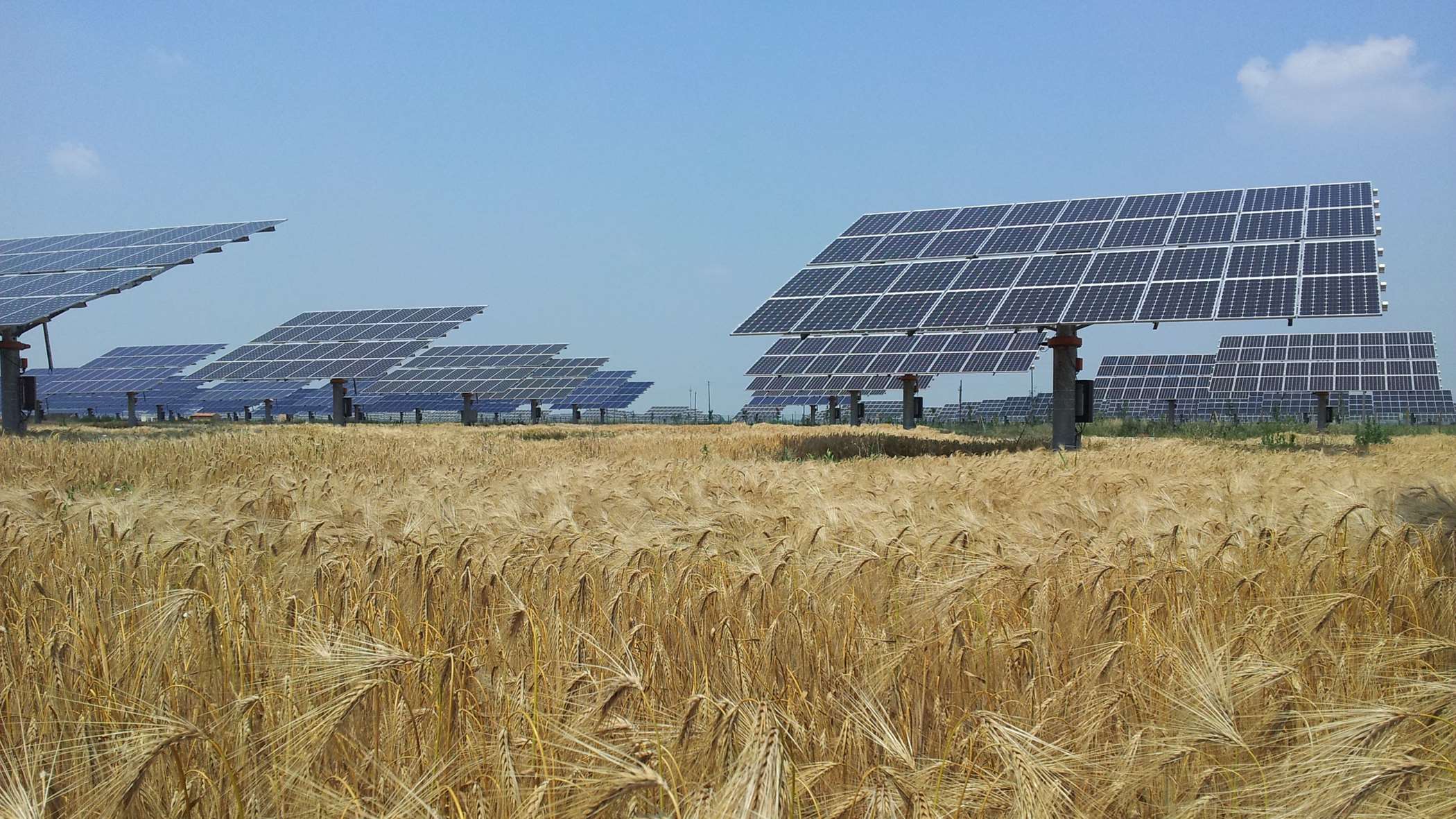Sustainability
Agriculture and energy generation go hand in hand
Agrivoltaics is the agriculture-friendly answer to the growing demand for sustainably generated energy. It matches the productivity of solar energy with the requirements of farming.

In 2013, Repower Italia took a pioneering role with the commissioning of the agrivoltaic plant near Castelguglielmo in the Veneto region of Italy. The project was the result of an encounter between a traditional farming family from Polesine and Repower. The family wanted to optimise its farm, and Repower wanted to make it more efficient and sustainable to generate energy from renewable resources. The result was one of the first agrivoltaic projects in Italy. Both the farmer and the energy producer achieved their goals.
The agrivoltaic system near Castelguglielmo covers an area of 34 hectares and utilises solar tracking technology. The installation has 600 photovoltaic sails that track the sun like a sunflower. Each sail consists of 36 modules, resulting in an impressive total of 21,600 photovoltaic modules. The installation has a capacity of 7.5 MW and generates an average of 15 GWh of energy per year.
The photovoltaic sails are arranged above the ground in a chequerboard pattern at intervals of around 21 metres. This means that most of the farmland can be cultivated. It is currently used to grow soft wheat, durum wheat, sorghum, barley and pulses such as soya, peas for protein and rapeseed.
Agrivoltaic technology promotes the continuity of agriculture and in some respects even improves it. The experience of Castelguglielmo has shown that the sails protect the crops from wind and hail and reduce water evaporation, resulting in less water consumption. The shade provided by the sails also encourages the growth of certain plants.
Agrivoltaic technology makes a positive contribution to environmental change in two ways: Firstly, it generates renewable energy from the power of the sun, and secondly, it promotes and improves sustainable cultivation practices in local agriculture.